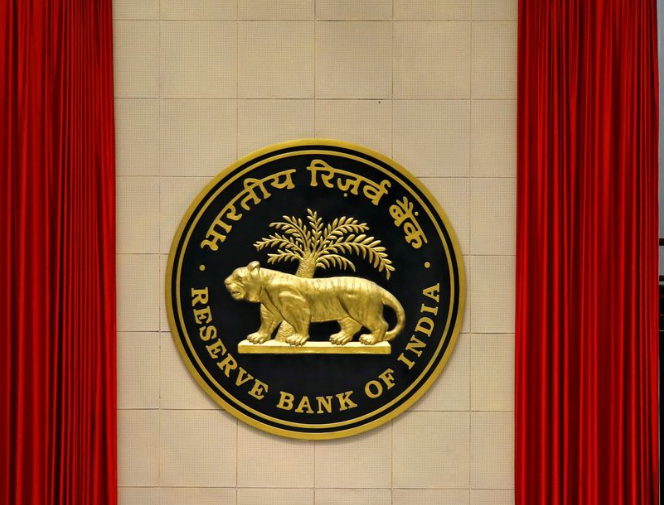India bond index inclusion set to test central bank's liquidity, FX management
The RBI, however, does not prefer MSS and would opt for OMOs as the latter gives it more direct control on the securities, one of the sources said.
)
India's inclusion next year in the JPMorgan emerging market debt index, which could draw up to $25 billion in inflows over a short period, would need more active currency intervention and liquidity management from the central bank, two sources said. Analysts have estimated the inclusion, which will happen from June 2024, could bring in that sum over a 10-month period but people aware of the Reserve Bank of India's (RBI) thinking expect flows to be lower as roadblocks remain. "There are speed breakers. All the constituents of the JPMorgan index are usually tax exempt, we have not relented on that. So as and when passive investors encounter tax implications, they will think twice," one of the sources said.
"We are also not in Euroclear, so they cannot settle via that".
Even if flows are lower than predicted, they would still add to market volatility. Foreign portfolio investors have bought an average $6 billion in stocks and bonds on a net basis over the last five years, with 2019 seeing the largest dollar inflows in recent years at around $18 billion. The Reserve Bank of India can buy dollars in the spot market or forwards to prevent the currency from overshooting and further build its foreign exchange reserves kitty while using the standing deposit facility, a collateral-free, low-interest-bearing overnight liquidity withdrawal tool, to mop up the resultant rupee liquidity, the two sources said.
To manage any distortions in the bond yield curve, the central bank can use open market operations (OMOs) or any other tools as and when required, the sources added.
"From a macro management perspective, the rise in domestic liquidity will have to be counterbalanced by appropriate macro-prudential measures from the central bank," Morgan Stanley said in a recent note.
The central bank could use market stabilisation scheme (MSS)bonds, open market sales, and longer-term reverse repo auctions to ensure that it does not translate into macro stability risk in the form of higher inflation, the investment bank added.
The RBI, however, does not prefer MSS and would opt for OMOs as the latter gives it more direct control over the securities, one of the sources said.
The initial inflows may not be as large as the $23-$25 billion being anticipated, according to R. Gandhi, a former deputy governor at the central bank, who said that active funds may take some time to increase positions. These flows however should be manageable through "standard tools", Gandhi added.
The inclusion will also sharpen the focus on government finances and macro numbers, requiring more transparency and alignment with international norms, said G. Padmanabhan, a former executive director at the RBI.
Get Latest Business News, Stock Market Updates and Videos; Check your tax outgo through Income Tax Calculator and save money through our Personal Finance coverage. Check Business Breaking News Live on Zee Business Twitter and Facebook. Subscribe on YouTube.
RECOMMENDED STORIES

Mukhyamantri Majhi Ladki Bahin Yojana: Know eligibility, benefits, and documents to apply for this women-centric government scheme

Gratuity Calculator: Rs 37,000 as last-drawn salary; 6 years and 3 months as service period; know your gratuity?

Top 7 Gold ETFs With Highest Annualised Returns in 10 Years: Know how Rs 10 lakh investment in each ETF has performed in last decade

Defence PSU Stock to BUY: This multibagger scrip corrects 49% from 52-week high - Is this right time to buy?

Top 7 Large and Mid Cap Mutual Funds With up to 43% Return in 1 Year: Rs 25,000 monthly SIP investment in No. 1 scheme is now worth Rs 3,64,654

Power of Compounding: Can monthly SIP investment of Rs 7,000 help build corpus of Rs 4.5 crore? See in how many years it can be done
10:01 PM IST












 Rate cuts by RBI can boost home affordability over next 12 months: JLL
Rate cuts by RBI can boost home affordability over next 12 months: JLL Term deposits outpace CASA growth in September: RBI data
Term deposits outpace CASA growth in September: RBI data  RBI, Maldives Monetary Authority sign pact to promote use of local currencies
RBI, Maldives Monetary Authority sign pact to promote use of local currencies RBI cautions public about 'deepfake' video of governor being circulated on social media
RBI cautions public about 'deepfake' video of governor being circulated on social media RBI cancels licence of Vijayawada-based Durga Co-op Urban Bank
RBI cancels licence of Vijayawada-based Durga Co-op Urban Bank